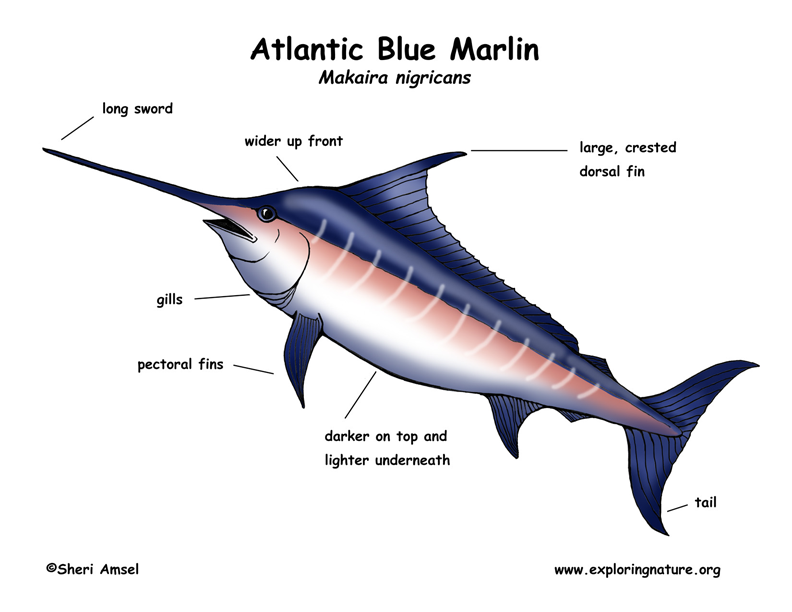

They are found throughout the Atlantic Ocean's tropical and temperate waters. It is also found in the warmer waters of the Pacific and Indian Oceans.
They live out in the open ocean, preferring warm, blue waters. They like water that is 75°F (24°C) and are the most tropical of the swordfishes (billfishes).
Females grow up to 4,000 pounds (1,800 kilograms) but are more commonly about 1,200 pounds. They are usually four times as heavy as males and can reach 13 feet long (4m). Their long sword makes up to 1/5 of the body's length. They are darker on top and lighter underneath, a coloring that acts as camouflage in their ocean habitat. They are wider up front behind the eyes and taper down smaller to the tail.
They can use their long bill to injure prey by charging through a school of fish, then return to eat its prey.
They eat fish and squid.
They are eaten by sharks, but by far humans are their most dangerous prey.
Females release eggs (spawn) from late summer into the fall and may release many millions of eggs over the spawning period.
Females live longer than males, sometimes more than 25 years. Males rarely live 20 years. It is, at this time, not listed as a threatened species by the International Union for Conservation of Nature (IUCN).
Kingdom: Animalia
Phylum: Chordata
Class: Actinopterygii
Order: Perciformes
Family: Istiophoridae
Genus: Makaira
Species: M. nigricans
When you research information you must cite the reference. Citing for websites is different from citing from books, magazines and periodicals. The style of citing shown here is from the MLA Style Citations (Modern Language Association).
When citing a WEBSITE the general format is as follows.
Author Last Name, First Name(s). "Title: Subtitle of Part of Web Page, if appropriate." Title: Subtitle: Section of Page if appropriate. Sponsoring/Publishing Agency, If Given. Additional significant descriptive information. Date of Electronic Publication or other Date, such as Last Updated. Day Month Year of access < URL >.
Amsel, Sheri. "Marlin (Atlantic Blue)" Exploring Nature Educational Resource ©2005-2024. December 13, 2024
< http://www.exploringnature.org/db/view/Marlin-Atlantic-Blue >

